FIMETI - Introduction
The Fair Isle Marine Environment and Tourism Initiative (FIMETI) was a Fair Isle community-led initiative in partnership with Fair Isle Bird Observatory Trust and The National Trust for Scotland.
The Initiative was set up in 1995 by the Fair Isle community, concerned at steady and unremitting damage to its marine environment.
The sea around Fair Isle has always played an essential part in community life, both socially and economically, and continues to do so. FIMETI, perceiving no action from other bodies, set out to provide a catalyst for urgent progress towards proper, sustainable management of the Fair Isle marine resource.
On Fair Isle we have identified that sustainable management of our marine area would have major positive impacts on the marine environment, tourism, local economy, education and research, with proven benefits also to the wider community and fishermen as shown by similar community-based Marine Protected Areas in New Zealand, Finland and many other parts of the world.
Fair Isle emphasises its collaborative approach to research and management of the local waters, accepting that a partnership approach incorporating input from government, academic institutions and stakeholders will be necessary to draw together the most effective and targeted programme.

The purpose of the Initiative was to establish the long term protection and sustainable management of the marine resources around Fair Isle, to the mutual benefit of the community of Fair Isle, users of the marine area and for the education and enjoyment of visitors.
Fair Isle's maritime environment is extremely rich, both at the natural environment and community level. The two aspects are inextricably linked and a threat to the first has serious implications for the second. The Fair Isle community has witnessed an erosion of that richness and was concerned that, without concerted action now, the resource will be devalued or lost altogether.
Project participants, supporters and observers are:
- The Fair Isle community through the Fair Isle Community Association
- The Fair Isle Bird Observatory Trust
- The National Trust for Scotland
- The Royal Society for the Protection of Birds
- Scottish Natural Heritage
- The Seawatch Foundation
- The North Atlantic Fisheries Centre
- The Shetland Amenity Trust
- Shetland Museum
- Shetland Islands Council
- The British Oceanographic Data Centre
- SCRAN - Scottish Cultural Resources Access Network
- Blue Marine Foundation
- 'COAST' (Community of Arran Seabed Trust)
- Cape Farewell
- Information Centre for Island Technology
- Lyme Bay Fisheries and Conservation Project
- The Clipperton Project
- fauna and flora international
- Council of Europe
- School of Ocean Sciences, University of Bangor
- University of Aberdeen
PROJECT FUNDING
The Fair Isle Marine Environment & Toursm Initiative has been assisted by grant-aid from a number of agencies and we would like to thank these for their much-needed help and support: in particular the Scottish Office through its Rural Challenge scheme with matching funding from the National Trust for Scotland.
The Rural Challenge funding was for a three year period which came to an end in March 1999. Since then, FIMETI has been supported financially at various times by the EU, Dunrossness Community Council, The National Trust for Scotland, Shetland Enterprise, Scottish Natural Heritage, Shetland Islands Council and The Williamson Bequest.
In 2008 funding has been made available by the Scottish Government’s Scottish Sustainable Marine Environment Initiative (SSMEI) to help FIMETI work on the preparation of a local Marine Spatial Plan.
From 2011 onwards, the Blue Marine Foundation has been very supportive - including helping to finance the preparation of Fair Isle's MPA proposal and visits by FIMETI working group members to conferences and meetings related to the establishment and management of Marine Protected Areas.
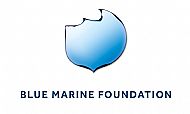
OTHER COMMUNITY-LED MARINE INITIATIVES AND SUPPORT FOR A FAIR ISLE MPA -
Here on Fair Isle we have identified that sustainable management of our marine area would have major positive impacts on the marine environment, tourism, local economy, education and research, with proven benefits also to the wider community and fishermen as shown by similar community-based Marine Protected Areas in New Zealand, Finland and many other parts of the world.
Initially, the Fair Isle Marine and Environment and Tourism Initiative (FIMETI) was the only community-led initiative in the UK pressing in this way to protect its marine resource. However, other groups have now emerged, including the Community of Arran Trust (COAST) project and the Lyme Bay Fisheries and Conservation Reserve.
We are very grateful for the mutual support and encouragement that we are now receiving from these and other community-led marine intitiatives and MPA supporters such as the Blue Marine Foundation and The Clipperton Project.

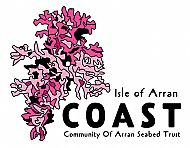

FAIR ISLE - Island, community and culture
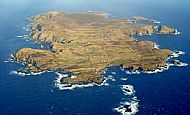
Approximately 4 km long by 2 km wide, Fair Isle is the most southerly island of the Shetland group (the northernmost islands of the British Isles), lying approximately 33.79 kilometres south-south-west of Sumburgh Head at the southern end of the Shetland mainland, and approximately the same distance north-east of North Ronaldsay (the most northerly of the Orkney islands).
Fair Isle's climate is oceanic in nature. In winter the weather is generally mild and often stormy. The summers are cool, damp and - at times - foggy and often breezy.
Fair Isle's own weather station sends daily weather reports to the British Meteororological Office, with Fair Isle's important climate data going back as far as the 1960's. Fair Isle's sea temperature and salinity records are also taken on a regular basis. With its long run of data and important geographical position, Fair Isle is ideally situated for monitoring changes in climate and its effects on the ecosystem.
There is archaeological evidence that Fair Isle has been inhabited since the Neolithic period at least 5,000 years ago. This is testament to the careful stewardship and sustainable use of Fair Isle's terrestrial and marine environment by successive generations of islanders who - unable to use up a precious resource in such a remote location and then move on to exploit another resource elsewhere - have had to take care of what they have. This is just as applicable today.
Dr. George Waterston, a much-loved benefactor, bought the island after World War II and co-founded the Bird Observatory in 1948, giving the isle's economy a much-needed boost. In 1954 the National Trust for Scotland succeeded him as landlord and, through a programme of house renovation and infrastructure improvements, helped islanders to stem emigration and revitalise the community.
The present population, of what is one of Britian's most isolated inhabited islands, is around 70. There are eighteen crofts ranging in size from 3 to 20 hectares. As well as traditional crofting islanders are involved in many other forms of renumerative activities, including the word-famous Fair Isle knitting, boat-building and environmental tourism, the latter of which underpins the whole island economy.
Facilities. The island has a shop and post office, primary school and a resident community nurse. The purpose-built Fair Isle Bird Observatory and Guest House has accommodation and facilities for up to 35 visitors and researchers, including a conference room, bar and gift shop. There are also bed and breakfast accommodation outlets and a self-catering cottage and on the island. The George Waterston Memorial Centre is a fascinating museum housed in the former school, packed with displays of the island's history from prehistoric times to the present.
Throughout its recent history Fair Isle has always given a warm welcome to visitors and to this end the island is well served with a modern ferry, based on the island and crewed by islanders. This, together with modern harbour facilities means that - even in winter - the island is very rarely cut off from the Shetland mainland for longer than a week to 10 days.
There is also a regular air link to Shetland - more frequent in summer operated by Direct Flight using an eight-seater 'Islander' aircraft.
During the spring and summer months, Fair Isle is also host to a number of visiting cruise ships and a large number of yachts and occasional tall ships. The island is often host to musical, craft and other cultural and environmental events

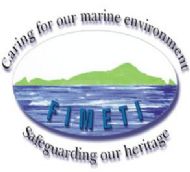
The Fair Isle Marine Environment and Tourism Initiative (FIMETI) is a partnership between the Fair Isle community, the Fair Isle Bird Observatory Trust and The National Trust for Scotland.
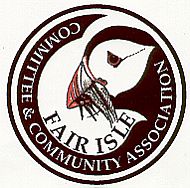

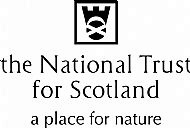
Text and photographs Copyright Fair Isle Marine Environment and Tourism Initiative. All rights reserved.

